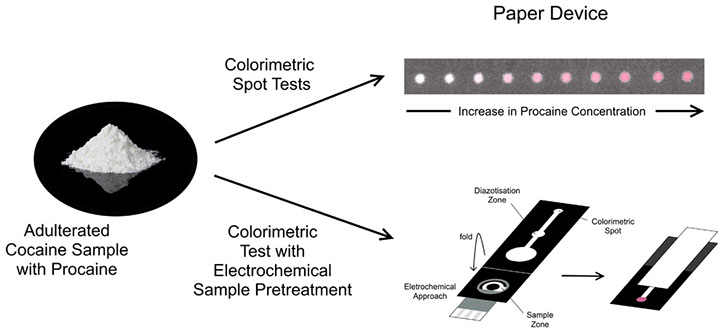Electrode Surface Modification using Laser
A novel and quick (sub-minute) method for synthesizing gold nanoparticles (AuNPs) onto electrochemical paper-based devices (ePADs) using a CO2 laser is presented. An ePAD, fabricated by laser-scribing carbonization of kraft paper, is modified by the in situ synthesis of AuNPs onto a working electrode, driven by the CO2 laser reduction of a precursor solution (HAuCl4). Cyclic voltammograms recorded in H2SO4 and energy dispersive spectroscopy confirm the presence of Au structures embedded in the carbonized paper matrix. A gold-modified electrode (LSAu-ePAD) shows an improved electrochemical response towards the ferri/ferrocyanide redox probe, with decreased peak potential separation, a 13-fold increase in peak current, and reduced charge transfer resistance (0.11 kΩ vs. 6.30 kΩ) compared to unmodified electrodes. Scanning electrochemical microscopy reveals an increase in the electrode’s electron transfer rate by the Au modification, reflected in the voltammetric profile in bulk measurements. LSAu-ePAD repeatability and reproducibility are 0.4% (n = 10) and 9.7% (n = 5), with a shelf life of up to 30 days.
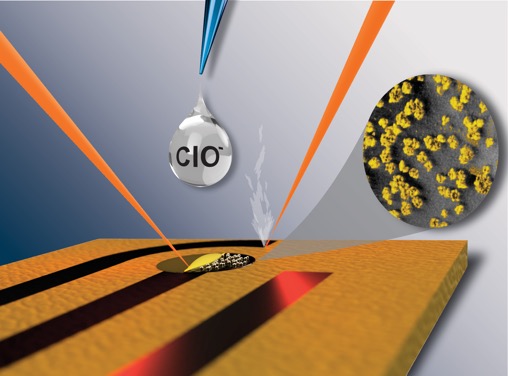
3D-Printing and Electrochemical Sensor
Research in our group explores the intersection of 3D printing technology and electrochemical sensors, focusing on developing innovative and efficient solutions for fabricating electrodes with enhanced electrochemical performance. We use various carbon-based materials such as multi-walled carbon nanotubes (MWCNT) and carbon black (CB) to create conductive filaments for additive manufacturing. Our research has demonstrated significant advancements in electrochemical sensors by improving the electrical conductivity and electrochemical responsiveness of 3D-printed electrodes through novel materials and treatment techniques. One of our key developments includes a high-performance electrically conductive filament made from a combination of MWCNT and CB. This filament shows superior electrochemical properties compared to traditional filaments and has been successfully used in applications like simultaneous drug detection. Additionally, we have introduced an eco-friendly, rapid, and reagentless surface treatment method using a CO2 laser to enhance the conductivity of carbon-black/PLA-based electrodes. This method has proven effective in detecting various substances, including pharmaceuticals and heavy metals, with high reproducibility and without the need for harmful chemicals. Our group is also pioneering in the practical application of these technologies, demonstrated by a print-at-home electrochemical sensor device that allows for easy and effective monitoring of specific compounds in real samples. This innovative approach simplifies the fabrication process and enhances the accessibility and applicability of electrochemical sensors in everyday life. Through these advancements, our research aims to push the boundaries of 3D-printed electrochemical sensor technology, making it more sustainable, accessible, and efficient for various applications.
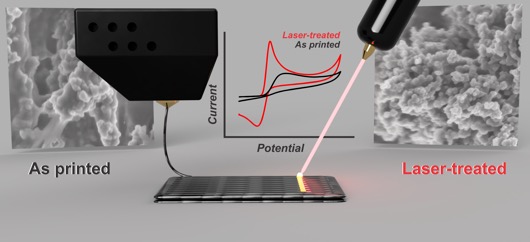
Paper-Based Electrochemical device using laser for different applications
A single‐step laser scribing process is used to pattern directly nanostructured electrodes on paper‐based devices. The facile and low‐cost technique eliminates the need for chemical reagents or controlled conditions. This process involves using a CO2 laser to pyrolyze the surface of the paperboard, producing a conductive porous non‐graphitizing carbon material composed of graphene sheets and composites with aluminosilicate nanoparticles. The new electrode material was extensively characterized, and it exhibits high conductivity and an enhanced active/geometric area ratio; it is thus well‐suited for electrochemical purposes. As a proof‐of‐concept, the devices were successfully employed for different analytical applications in the clinical, pharmaceutical, food, and forensic fields. The scalable and green fabrication method associated with the features of the new material is highly promising for developing portable electrochemical devices.

SERS Paper-Based Electrochemical device using Gold Nanoparticles for Forensic Applications
Drug trafficking is a major worldwide problem. In this context, cocaine is one of the most commonly used drugs abuse, in addition, street cocaine sample is commonly seized adulterated with pharmaceutical compounds, and the composition of the mixture provides chemical fingerprints of the samples that can assist the police intelligence department to track the distribution route of the drug; hence the development of facile cost-effective methods for determining the composition of street cocaine is an important objective. Herein we report a simple strategy for fabricating paper-based analytical devices (PADs) for the dual electrochemical and surface-enhanced Raman-scattering (SERS) determination of cocaine samples. Accordingly, a 2-µm-thick Au film was prepared by depositing gold nanoparticles (AuNPs) on office paper with wax-barrier templates to create nanostructured gold tracks that are mainly formed by Au (111) fcc planes as electrodes and SERS transducers. These devices were characterized by scanning electron microscopy, X-ray diffractometry, electrochemical impedance spectroscopy, and energy-dispersive X-ray spectroscopy. The optimized device is simple and inexpensive to prepare and exhibited a Raman-scattering enhancement factor of 3 x 106, a 15-fold superior electroactive area, and a 2.6-fold decrease in charge-transfer resistance compared with a conventional Au electrode. In addition, these PADs were successfully used in a forensics scenario to screen and analyze a seized street cocaine sample, determine its chemical profile, and to identify simultaneously caffeine, paracetamol, and levamisole adulterants.
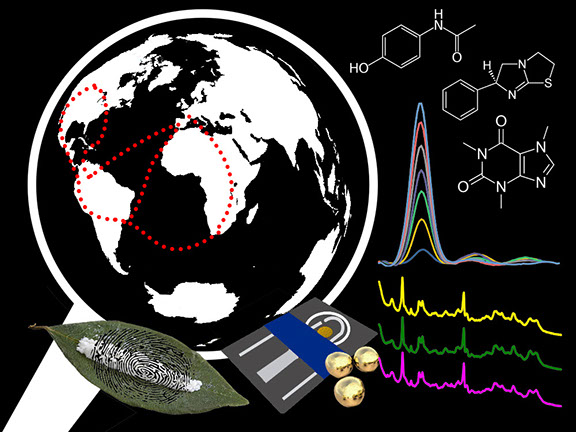
Colorimetric Paper-Based devices for Forensic Applications
In this report, we introduce a novel approach for an inexpensive and disposable colorimetric paper sensor array for the detection and discrimination of five explosives – triacetone triperoxide (TATP), hexamethylene triperoxide diamine (HMTD), 4-amino-2-nitrophenol (4A2NP), nitrobenzene (NB), and picric acid (PA). The colorimetric sensor comprised a disposable paper array fabricated using a wax printer and three reagents (KI, creatinine, and aniline) that produced a unique color pattern for each explosive based on chemical interactions between the explosive species and the chemical reagents. The analytes were discriminated from one another as per the color change profiles, which were readily distinguishable after 15 min, using hierarchical clustering analysis (HCA) and principal component analysis (PCA); there were no misclassifications in any of the trials conducted. The colorimetric pattern values were extracted using a smartphone, custom-made software and a closed chamber to circumvent the common illumination problems in other paper approach devices. A semi-quantitative analysis was performed, and it was possible to use as low as 0.2 μg of explosives.
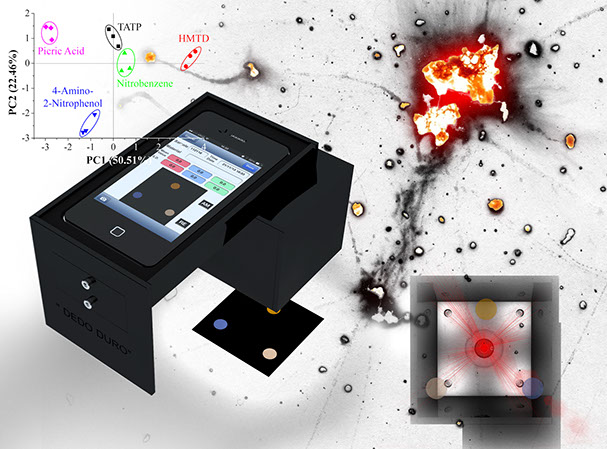
Colorimetric Paper-Based devices with Electrochemical pre-treatment step for Forensic Applications
We report the development of a simple, portable, low-cost, high-throughput visual colorimetric paper-based analytical device for detecting procaine in seized cocaine samples. The interference of most common cutting agents found in cocaine samples was verified, and a novel electrochemical approach was used for sample pretreatment to increase the selectivity. Under the optimized experimental conditions, a linear analytical curve was obtained for procaine concentrations ranging from 5 to 60 μmol L–1, with a detection limit of 0.9 μmol L–1. The accuracy of the proposed method was evaluated using seized cocaine samples and an addition and recovery protocol.
